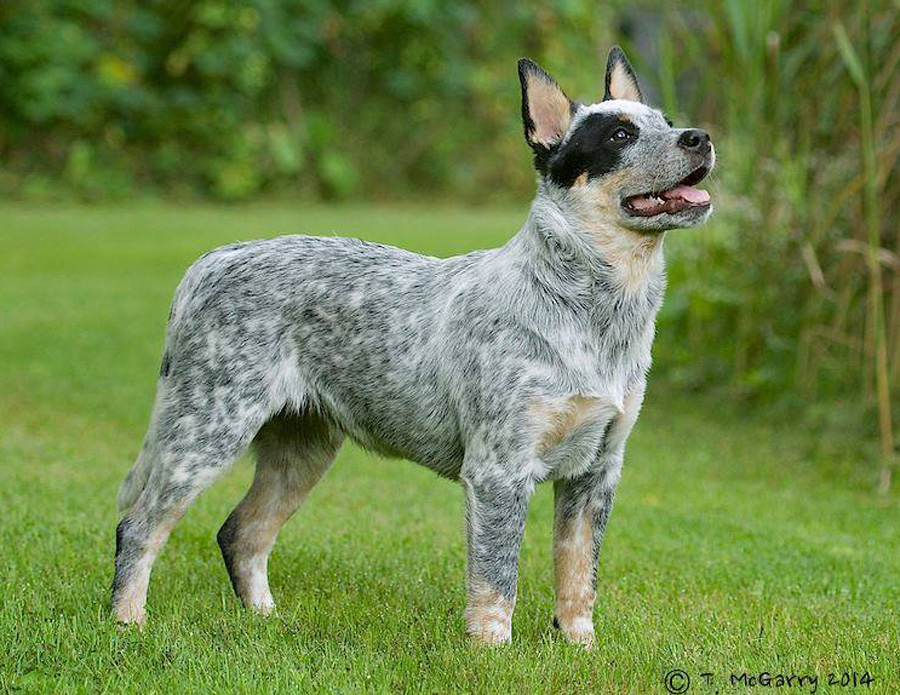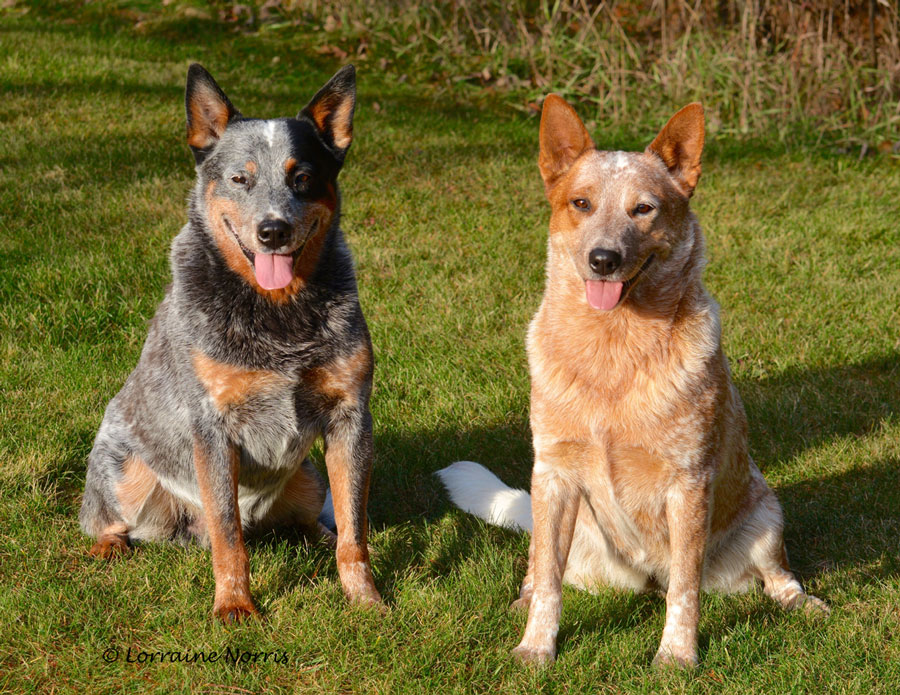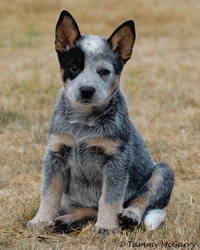Origin: Bred and born for mustering and moving stubborn cattle in the outback of Australia, the Australian Cattle Dog is a loyal, protective and hardworking dog. They possess great stamina and endurance.
Height: Male: 18-20″ Female: 17-19″
Weight: Male: 45-55lbs Female: 35-45lbs
Coat: Double coat – The outer coat is weather resistant, moderately short and straight with a medium texture. The undercoat is short and dense. Minimal grooming is required, but with the biannual
shed the coat should be given a good brushing. When showing the Australian Cattle Dog, they are presented in their natural state – no trimming of the whiskers or coat.
Colours: Blue (blue black & tan; blue & tan; blue speckled) or Red (red; red speckled) Solid markings are permissible on the head and tail, but solid markings on the body are not desirable. Blue dogs may have evenly distributed tanning on the head. Tanning colour is also carried midway up and across the fore chest, the front and rear legs and into the inside. Often you will see a “raccoon” tail on the cattle dog, which is basically a white tail with the base colours of the dog’s coat shown throughout. An interesting note is the Australian Cattle Dog is born white (except for any dark patches), they will start to change colour after a couple of weeks.
Feeding: The ACD does not have any special feeding requirements. It is always best to feed your cattle dog a good quality dog food, whether it’s home cooked, commercial kibble or raw, to ensure it is properly fuelled for its performance and health.
Training & Obedience: Cattle dogs are very intelligent and extremely intuitive. They learn quickly, but can also be stubborn. They require leadership from their owners. The cattle dog may test you to the limits, but are generally compliant once they given the right direction. They are happy having a job to do and want to please. Channeling their energy can be challenging at times, but generally they excel at herding, agility, flyball, tracking, dock diving and other high performance events. Consistent training is essential. Obedience classes and lots of socialization is highly recommended.
Housebreaking: An early start with consistent instruction. Direct your puppy to one door at first and leading them to the outside area where you want them use.
Crate training: Puppies can start off in a 200 sized crate but adults require a 300 sized, and large males would likely be more comfortable in a 400 sized crate.
Hot Days: Cattle dogs can work in some pretty tough weather conditions, but as all dogs you must ensure that they do not get dehydrated. Always have plenty of water on hand.
Red flags: Deafness: All cattle dogs should be evaluated prior breeding, and pups need to be tested before going to their new families. They can be deaf in one ear (unilateral) or both ears (bilateral). Dogs that hear in only one ear can lead a very normal life. Dogs deaf in both ears do require some special training by using visual aids (hand signals, light), vibration collars, etc.



